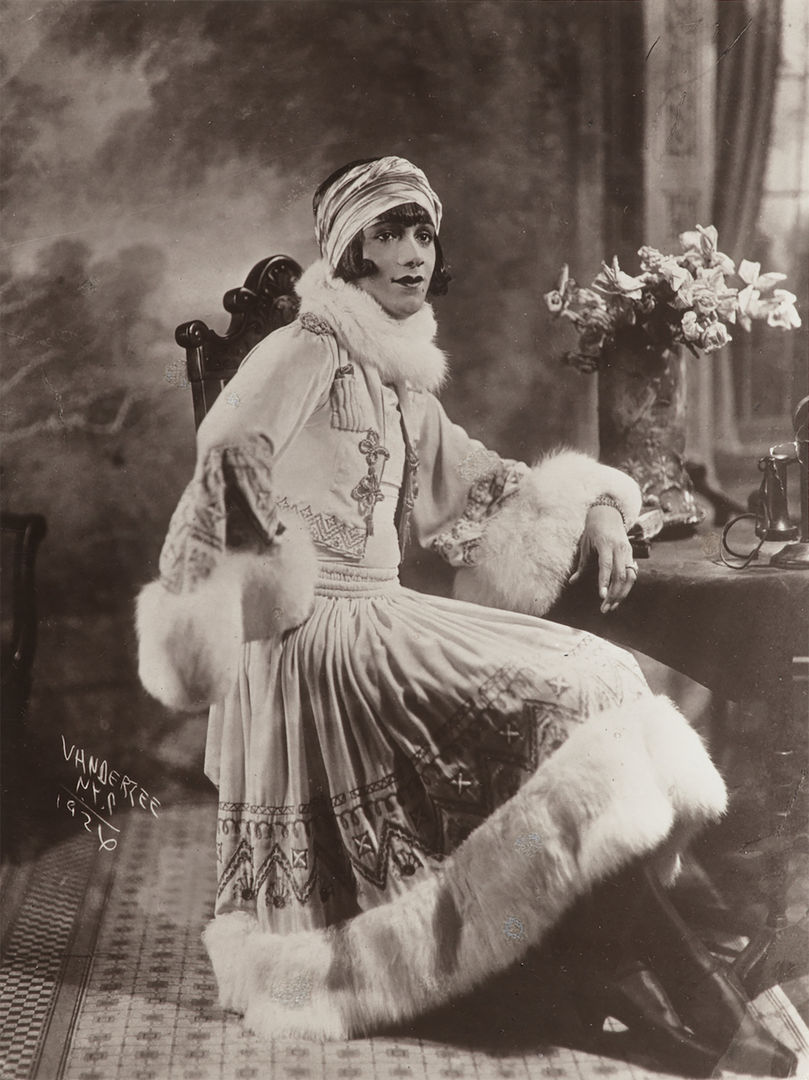I’ve never been a fan of the ekphrastic poem that merely states in words what the visual image already shows us. I’m more interested, instead, in an oblique approach to writing about art, the poem as psychological and emotional response to something within the visual image, rather than a transcription of that image. This kind of poem requires thinking past the image itself and considering its deeper resonances.
James Van Der Zee’s doubly-titled photograph points to the sexual ambiguity of the photograph’s subject. [Person in a Fur-Trimmed Ensemble] (1926) deliberately leaves gender unspecified. The alternative title, Beau of the Ball, suggests a male figure, but at first glance the subject is female and wearing women’s clothing. So for me the photograph speaks to optical illusion, to ambiguity, to the blurring of immediate impressions and assumptions.
While seated at a fancy social event myself, I considered what the person in Van Der Zee’s photo might have seen, had they glanced, as they surely did, out the window that the photograph also includes. What I saw is explained in my poem: depending on how I looked at it, at the chandelier reflected in the glass, or at the tree visible through the glass, I was confronted with natural beauty or with the horror of lynching. It startled me that lynching should come to mind, but it reminded me at the same time that the natural world, that of trees especially, is always at some level resonant with the grisly racial history of Black people in this country, which includes the common practice of lynching.
My poem speaks to the same blurring, the same optical illusion that occurs in Van Der Zee’s photograph. It also speaks to Black experience in the United States, and the ways in which our history here and the natural world are inextricably linked. Finally, I like to think the poem, in pairing the manzanita with the chandelier, contains both natural and manufactured beauty, each of which is represented in the photograph by the person’s body and by the fur-trimmed ensemble. Both poem and photograph suggest that our history is never far from us; beauty can distract us from that, when we’re lucky, but sometimes it can bring us face to face with it all over again.

James Van Der Zee ( American, 1886–1983). [Person in Fur-Trimmed Ensemble] , 1926. Gelatin silver print, sheet: 12 × 10 in. (30.5 × 25.4 cm). James Van Der Zee Archive, The Metropolitan Museum of Art; Gift of Donna Van Der Zee, 2021 (2021.446.1.25) © James Van Der Zee Archive, The Metropolitan Museum of Art
“At the Reception” by Carl Phillips
Through the window,
one of those trees I
mainly call manzanita
because that sounds right,
not because I’m sure,
kept finding stillness
then letting go of it
in a small wind. But
inside the window,
the chandelier’s reflection:
so that the tree itself,
for a moment, seemed
chandeliered;
then it looked like
stars, from different
lengths, though, of
invisible rope, being
lynched, but in unison.





















